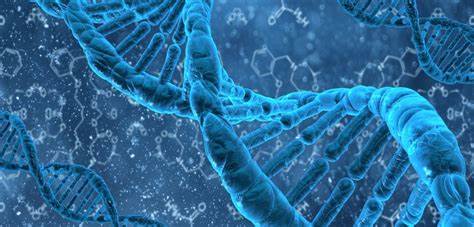Lexeo Therapeutics’ Cardiomyopathy Gene Therapy Showcases Positive Tolerance and Clinical Biomarker Improvement
In the vanguard of clinical exploration, Lexeo Therapeutics has reported encouraging outcomes from two clinical trials. Their pioneering gene therapy, LX2006, geared toward addressing Friedreich’s Ataxia (FA) cardiomyopathy, has shown good tolerance and significant absence of severe adverse events related to the treatment. Moreover, meaningful improvements in cardiac biomarkers have been observed, though the full impact on patients’ quality of life is still under close evaluation.
On the 15th of July, 2024, the American biotechnology firm announced the latest strides made with LX2006 in a Phase 1/2 clinical trial and a Phase 1a trial initiated by Weill Cornell Medicine researchers. LX2006 demonstrated a sound safety profile, with no serious adverse incidents tied to the therapy. Additionally, clinical biomarkers indicating cardiac health exhibited progressive enhancement over time.
The hereditary, progressive, and degenerative multisystem disorder, Friedreich’s Ataxia, springs from mutations in the FXN gene, hampering the production of the essential frataxin protein. Frataxin plays a pivotal role in mitochondrial function within cells and the maintenance of cardiac function. Its deficiency affects the peripheral nerves and brain regions governing movement and balance, leading to neurologically based symptoms like impaired muscle coordination or ataxia, which worsens as the disease advances. Patients often develop various heart conditions, including myocardial hypertrophy or hypertrophic cardiomyopathy and arrhythmias, as the ailment progresses.

Previously, on February 28, 2024, the FDA approved Skyclarys, the first prescription medication for individuals over the age of 16 suffering from Friedreich’s Ataxia, marking a significant milestone in treatment. However, there remained an unmet need globally for medications targeting FA cardiomyopathy.
LX2006, as delineated by Lexeo’s announcements, is an AAV-based gene therapy candidate designed for intravenous administration to tackle cardiomyopathy associated with FA. By delivering a functional frataxin gene, it seeks to bolster frataxin protein expression and restore mitochondrial function in cardiac cells.
The dataset shared encompasses records from eight participants with a minimum six-month follow-up. Findings indicate an uptick in FXN protein expression levels amongst assessable patients. Initially, four subjects demonstrated elevated left ventricular mass indices (LVMIs), and of these, three exhibited a reduction of more than 10% in LVMI at 12 months—a promising predictor of decreased morbidity and mortality in heart disease. Researchers also reported a regression in sidewall thickening, an early sign of cardiac dysfunction, and a decrease in biomarkers for myocardial injury.
In April 2024, Lexeo publicized that the FDA had granted LX2006 Rare Pediatric Disease designation, Fast Track designation, and Orphan Drug designation for the treatment of FA cardiomyopathy.

Per reports from Fierce Biotech, Lexeo has endeavored to assess the drug’s impact on patient lifestyles via VO2 max. This metric quantifies the maximum volume of oxygen an individual can utilize during exercise, a measure of cardiorespiratory fitness. While VO2 peak levels were inconclusive for three of the eight participants, the remaining five demonstrated an average improvement of 1% at six months and 4% at twelve months. Lexeo commits to ongoing VO2 peak evaluations and is exploring further cardiorespiratory exercise tests that may yield greater utility for the patient cohort.
While supporting evidence for LX2006 presently derives from cardiac evaluations, Lexeo underscores precedence for drug approvals based on LVMI or transgene expression modifications. Animated by these results, Lexeo anticipates accelerating the therapy’s development, including dialogues with regulatory bodies about pivotal trial designs and potential expedited approval.
Fierce Biotech notes contrasts between Skyclarys’ demonstrated neurological efficacy and LX2006’s cardiac focus. Nonetheless, the evolving landscape over the coming years hints at growing competition. Peers such as Voyager Therapeutics and Neurocrine Biosciences are exploring FXN gene therapy, with Solid Biosciences and Lacerta Therapeutics pursuing gene therapies, and both Prime Medicine and Tune Therapeutics trailblazing in early-stage gene editing projects.


















































Discussion about this post